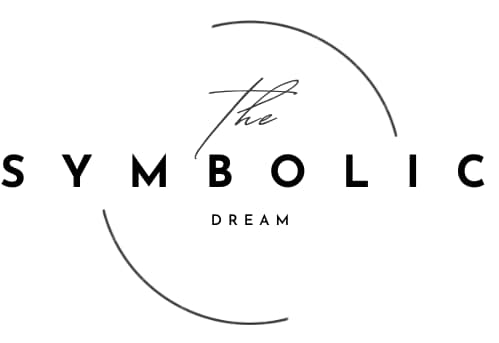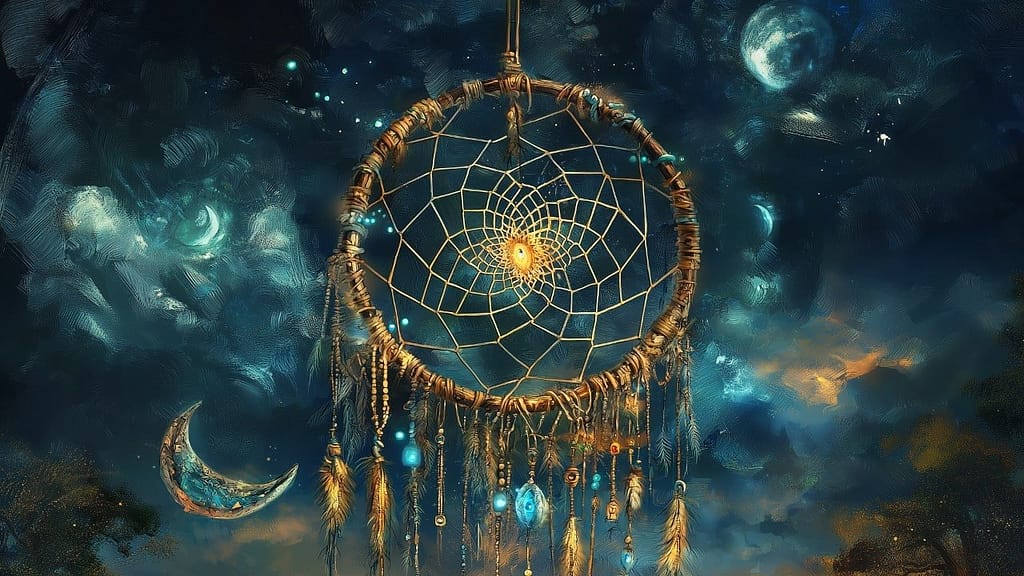Dreamcatchers were created as symbols of positivity and protection, but as our culture adopted the symbol as decor, the meaning has been muddied or in some cases, lost entirely. To the point that someone not privy (or practicing a devout religion) to their rich history and traditional use may be asking the question, are dreamcatchers bad?
Due to the shift of the dreamcatcher as a focal piece in a house, the symbol has, in some cases, developed superstitious connotations or a bad stigma by people not cognizant of the history of the symbol. And now there may be concerns and controversies surrounding their use.
What Is A Dreamcatcher?
The concept behind the dreamcatcher is simple. The symbol is rooted in the belief that the night air is filled with dreams, both good and bad.
The web of the dreamcatcher is designed to catch these dreams (or negative energy), allowing the good ones to pass through to the sleeper while trapping the bad ones, which are then dispelled with the morning light.
Traditionally, they were handmade by elders of the Ojibwe people and hung above children’s beds to protect them from nightmares and evil spirits.
The circular hoop represents the cycle of life, while the web is believed to filter out negative dreams, allowing only positive ones to pass through to the sleeper.
Each element of the dreamcatcher has a purpose:
The Beads: can represent dreams that have been “caught”.
The Feathers. a ladder for good dreams to climb into the dreamer’s mind.
The Hoop: The circle of life.
The Web: Catches or filters out the bad dreams.
The Ring: The mind or the cycle of life.

Are Dreamcatchers Bad?
Simply put, no. Any negative connotations ascribed to the dreamcatcher has resulted from superstitious beliefs held by people that never knew the true purpose of the tool or how to use it.
The mass production and commercialization of these sacred objects have stripped them of their original meaning and turned them into trendy commodities.
This commercialization disregards the cultural heritage and diluted the spiritual significance of the dreamcatcher.
Dreamcatchers were never intended for mass production or commercialization. Any object subjected to such a fate will always have negative attributes attached to it, especially if they’re regarded by superstitious people as a negative symbol.
The significance of the dreamcatcher lies within the cultural and spiritual context of the Ojibwe people who created it, and their appropriation by mainstream culture is what has led to concerns about cultural insensitivity and disrespect. Or even suspicions about dreamcatchers causing bad dreams or otherwise.
There’s nothing wrong with admiring their beauty and symbolism, but it’s crucial to avoid perpetuating harmful stereotypes or disrespecting Indigenous cultures.
The Creators Of The Dreamcatcher
The dreamcatcher’s roots trace back to the Ojibwe people, an Indigenous nation primarily residing in the Great Lakes region of North America.
These people created intricate webs crafted from willow hoops and sinew, with feathers and beads added for adornment.
There are several legends within the Ojibwe culture that attempt to explain how the dreamcatcher came about. One of them tells the tale of a grandmother who protected a spider from her grandson who wanted to kill it on sight.
The spider was grateful and wanted to offer the woman protection in the form of a gifted web, and said:
“I will spin you a web that hangs between you and the moon so that when you dream, it will snare the bad thoughts and keep them from you.”
While the dreamcatcher originated with the Ojibwe, its symbolism and use have spread to other Indigenous cultures, one of them, the Lakota people who adopted the dreamcatcher and incorporated their own beliefs into its meaning.
In the 1960’s, Native Americans also adopted the dreamcatcher as a result of the Pan-Indian Movement, and used it to symbolize the community of their people.
Positives and Negatives About Dreamcatchers
Positives:
- Symbolism of Hope and Protection: Many people find comfort and inspiration in the symbolism of dreamcatchers, believing they offer protection and positive energy.
- Aesthetic Appeal: Dreamcatchers can be visually stunning and add a unique touch to any space.
- Handmade Craftsmanship: Authentic dreamcatchers often represent intricate and skilled craftsmanship.
Negatives:
- Cultural Appropriation: The mass production and commercialization of dreamcatchers have led to concerns about cultural appropriation and disrespect for Ojibwe traditions.
- Misconception of Purpose: Many people misunderstand the original purpose of dreamcatchers, viewing them simply as decorative items rather than objects with deep cultural and spiritual significance.
- Spiritual Beliefs: Some believe objects like dreamcatchers possess spiritual power or influence. While this is a matter of personal belief, it’s important to be respectful of diverse perspectives.
Do Dream Catchers Cause Bad Dreams?
There is no scientific evidence to support the claim that dreamcatchers cause bad dreams. The belief that dreamcatchers catch bad dreams is a cultural interpretation, not a proven fact.
Personal experiences and beliefs can influence how individuals perceive objects and their impact on their lives.
The decision to have a dreamcatcher in your home is a personal one. It’s essential to be informed about the cultural significance of dreamcatchers and to respect the traditions of the Ojibwe people, and other cultures that incorporated the usage of the dreamcatcher into their daily lives.
If you choose to display a dreamcatcher, consider its placement and the intentions behind it.
FAQ
Why Does The Dreamcatcher have 8 points?
In many Native American cultures, the spider woman is a powerful figure often associated with creation, and protection. She’s believed to weave the web of life.
The eight-pointed dreamcatcher is said to represent the web spun by the Spider Woman.
Eight as a Sacred Number: The number eight holds spiritual significance in numerous cultures. It symbolizes balance, infinity, and new beginnings. In the context of the dreamcatcher, it represents the interconnectedness of all things and the cyclical nature of life.
The Spider Woman is a prominent interpretation of the eight-pointed dreamcatcher, but it’s essential to remember that the meaning of symbols can vary across cultures and individuals.
Some people may associate the eight points with other spiritual or personal significances.
What Are The Rules For Hanging A Dreamcatcher?
There aren’t any strict, universally agreed-upon rules for hanging a dreamcatcher but certain guidelines are commonly followed to maximize its potential.
Where to Hang Your Dreamcatcher
- Bedroom: Often considered the ideal location, hanging a dreamcatcher above your bed is believed to filter dreams, allowing positive ones to pass through while capturing nightmares.
- Near a Window: This placement allows the dreamcatcher to interact with natural elements like sunlight and wind, which are thought to cleanse and energize it.
- Away from Negative Energy: Avoid hanging a dreamcatcher in areas with high levels of negative energy, such as near arguments or electronic devices.
- Respectful Placement: If you’re unsure, trust your intuition. The best place for your dreamcatcher is where it feels right to you.
How to Hang Your Dreamcatcher
- Securely Attached: Ensure the dreamcatcher is hung securely to prevent accidents.
- Free Movement: Allow the dreamcatcher to gently sway in the breeze. This is believed to enhance its energy-cleansing properties.
- Avoid Direct Sunlight: Prolonged exposure to direct sunlight can fade the dreamcatcher’s colors and potentially damage its materials.
- Intention: Setting an intention for your dreamcatcher can amplify its power.
- Cleaning: Regularly dusting or smudging your dreamcatcher can help maintain its energy.
- Personal Connection: The most important aspect is your personal connection to the dreamcatcher. Trust your instincts and enjoy its beauty.
What Are The Negatives About Dreamcatchers?
There aren’t any negative “side effects” to using the dreamcatcher. Like anything, you get out what you put into it.




